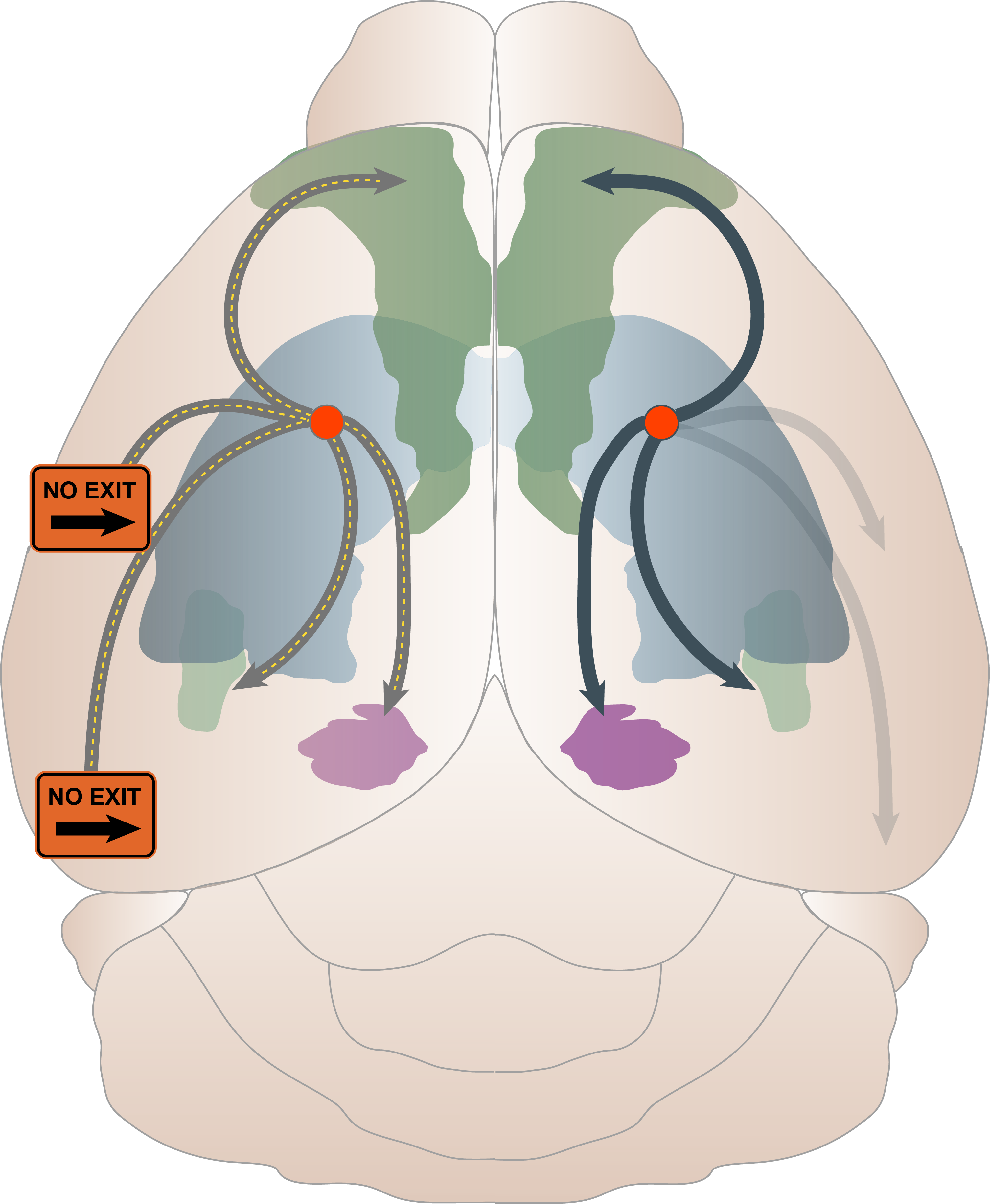‘Roadmaps’ of the brain reveal regions vulnerable to Alzheimer’s disease
June 9, 2021

GRAND RAPIDS, Mich. (JUNE 10, 2021) — Much like a supply truck crossing the countryside, the misfolded proteins that damage neurons in Alzheimer’s disease travel the “roads” of the brain, sometimes stopping and sometimes re-routing to avoid roadblocks, reports a study published in Science Advances by researchers at Van Andel Institute and University of Pennsylvania.
The findings shed light on how tau proteins, which form tangled clumps that damage brain cells in Alzheimer’s, move through the brain. The study also provides new insights into why some areas of the brain are more vulnerable to damage than other areas.
“While the interconnected structure of the brain is essential to its function, these misfolded proteins commandeer that structure to travel through the brain and cause progressive degeneration,” said Michael X. Henderson, Ph.D., an assistant professor at Van Andel Institute and corresponding author of the study. “By understanding how these proteins travel through the brain and what causes certain neurons to be at risk for damage, we can develop new therapies that can be directed to the right place at the right time to have maximal impact on disease progression.”
Using models of Alzheimer’s disease, the team mapped misfolded tau proteins as they progressed through the brain. They found that tau pathology moved from region to region along the brain’s neural networks, which are similar to biological highways, but that it did not travel to every connected region.
To find out why some areas of the brain seemed to resist the proteins’ spread, the team turned to gene expression patterns.

They identified some genes that were expressed more in regions that had more tau pathology than expected from protein spread alone. By understanding the genetic factors that control protein accumulation in the brain, the team hopes to identify ways to interfere with misfolded protein movement and slow or stop the progression of Alzheimer’s and similar neurodegenerative diseases.
“We used these network models to test our hypothesis that tau spreads both forward and backward along connections between brain regions,” said Eli Cornblath, Ph.D., an M.D./Ph.D. student at University of Pennsylvania and the study’s first author. “After using our models to account for this two-way spreading process, we found several genes that could help inform new molecular targets to clear or prevent these protein aggregates from forming.”
In addition to Henderson and Cornblath, authors include Howard L. Li, Lakshmi Changolkar, Bin Zhang, M.D., Ph.D., Hannah J. Brown, Ronald J. Gathagan, M.D., Modupe F. Olufemi, John Q. Trojanowski, M.D., Ph.D., Danielle S. Bassett, Ph.D., and Virginia M.Y. Lee, Ph.D., of University of Pennsylvania. Van Andel Institute’s Bioinformatics and Biostatistics Core also assisted with this work.
Research reported in this publication was supported by Michael J. Fox Foundation for Parkinson’s Research award no. 16879 (Henderson); the National Institute on Aging of the National Institutes of Health under awards T32-AG000255 (Lee), P30-AG10124 (Trojanowski) and U19-AG062418 (Trojanowski);the National Institute of Neurological Disorders and Stroke of the National Institutes of Health under award nos. P50-NS053488 (Trojanowski) and R01-NS099348 (Bassett); the National Institute of Mental Health of the National Institutes of Health under award no. F30 MH118871-01 (Cornblath); and the National Science Foundation under award nos. PHY-1554488 (Bassett) and BCS-1631550 (to Bassett). Bassett also acknowledges support from the John D. and Catherine T. MacArthur Foundation, the ISI Foundation, the Alfred P. Sloan Foundation, and the Paul G. Allen Foundation.
###
ABOUT VAN ANDEL INSTITUTE
Van Andel Institute (VAI) is committed to improving the health and enhancing the lives of current and future generations through cutting edge biomedical research and innovative educational offerings. Established in Grand Rapids, Michigan, in 1996 by the Van Andel family, VAI is now home to more than 400 scientists, educators and support staff, who work with a growing number of national and international collaborators to foster discovery. The Institute’s scientists study the origins of cancer, Parkinson’s and other diseases and translate their findings into breakthrough prevention and treatment strategies. Our educators develop inquiry-based approaches for K-12 education to help students and teachers prepare the next generation of problem-solvers, while our Graduate School offers a rigorous, research-intensive Ph.D. program in molecular and cellular biology. Learn more at vai.org.
Media Contact
Beth Hinshaw Hall
Van Andel Institute
[email protected]
616-822-2064
